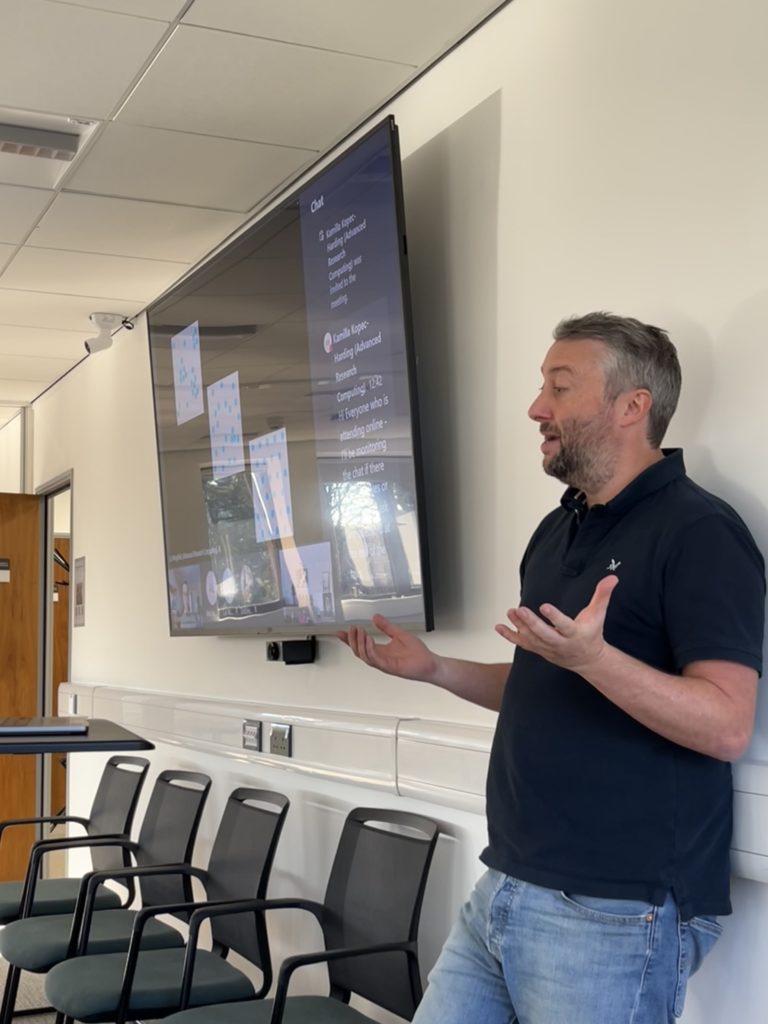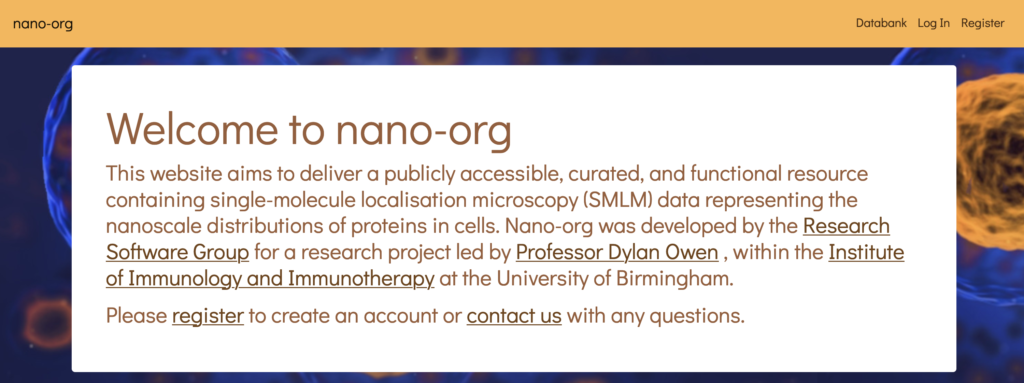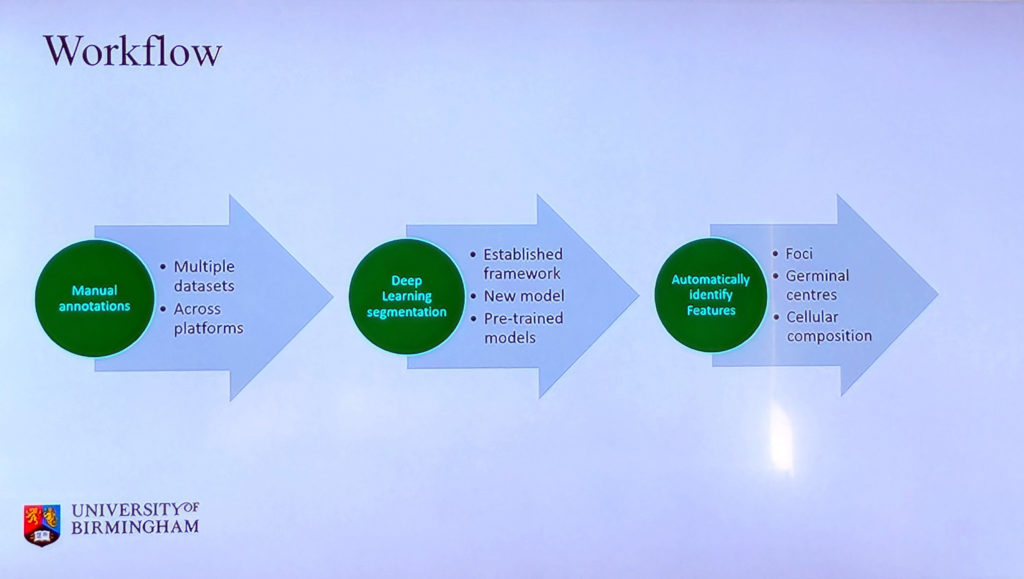In our latest Digital Research Conversation, held on the 29 November 2024, research staff and students from the University of Birmingham gathered to discuss ‘Interdisciplinary data science: strategies for success’ in the home of the Institute for Data and AI (IDAI), at Elm House.
Senior Research Data Scientist Dr Cai Wingfield arranged the event and introduced the discussion topic by describing the Research Data Science Service that is provided by IDAI and the Research Software Group, in Advanced Research Computing. The service is able to provide support from data scientists for Institute-funded, short projects, which includes an annual pump-priming funding round. All four researchers who spoke at the event (detailed below) had benefitted from the support of time from the data scientists, provided by the 2023 pump-priming funding. The Research Data Scientists can also be funded to collaborate on research projects via grant funding (see slide below for details or the Research Data Science Service webpages).


Professor Dylan Owen from the Institute of Immunology and Immunotherapy (IIM) then gave the first researcher talk entitled ‘A collaborative public repository for single-molecule microscopy data’. Dylan is a Physicist by training and currently works with both IIM and the School of Mathematics to develop advanced microscopy methods for imaging cells. Dylan studies membrane proteins and their distribution through use of Bayesian and Machine Learning methods to look for clusters. With help from the Research Software Group, he has developed the online repository nano-org to hold cloud point data that can be shared with other research groups. Users of the repository can search the metadata of the images and look at similarity with their own data, with the system providing a number for the ‘degree of similarity’.

Further to the nano-org website project, Dylan has now made use of a pump priming grant from IDAI to develop the track-org website, for microscopy data tracking trajectories of individually identified molecules over time.
The second speaker was Dr Christine Sheldon, a Research Fellow from the Centre for Artificial Intelligence in Government (CAIG), who described her journey ‘navigating interdisciplinary research as an early career social scientist’. Researchers at CAIG cover various interdisciplinary research areas including political science, use of data science methods and working with psychology to investigate MRI scans (see slide below).

Christine discussed the importance of interdisciplinary research in providing innovative perspectives and solutions, as well as opportunities to develop your own skills. She also highlighted some of the challenges such as; building an interdisciplinary network and finding collaborators, a lack of shared vocabulary, and time/resource restraints. Christine gave some tips in how to build successful collaborations including; starting with adjacent fields, looking for institutional support such as seed funds (e.g. IDAI pump priming), and attending workshops. She has set up a Special Interest Group (SIG) herself to encourage collaboration around the topic of use of High Performance Computing (HPC) with Large Language Models (LLMs) – see information on the LLM-HPC group here.

After some deliberation about the title 

Sebastian Gilbert from the School of Mathematics was the last researcher to speak on the topic of ‘AI-enabled Analysis of H&E images from Sjogren Syndrome (SjS) patients’. Sebastian is an Advanced Image Analysis Specialist working in the Birmingham Tissue Analytics Spatial Biology Facility. Sebastian’s research interests lie in spatial biology – the study of biological tissues within their own 2D or 3D context, which he described as the new frontier of molecular biology. By preserving spatial context, it enables complex systems biology, allowing modelling of the behaviour of different diseases and their metabolic pathways e.g. by identifying proteins on the cell surface. Sebastian went on to describe a project he has worked on with the data scientists to investigate AI enabled analysis of images of the salivary glands from patients with Sjogren’s Disease – a disorder that causes dryness of the mouth, nose and skin. They developed a Tissue Image Analysis (TIA) Toolbox to segment the images and identify immunoaggregate cells. The data was then used to train a model to predict the composition of the cells, with the aim of automating the analysis of the images. By pitching to other researchers at a Conference, the team found other researchers willing to share their data to contribute to making a more robust model.

The event finished up with a discussion between the speakers and audience around interdisciplinary research, with a key question being ‘are there any tips on how to be more interdisciplinary as an Early Career Researcher?’
Top tips for working in interdisciplinary research were:
- To plan rigorously and have focussed outcomes you can tick off.
- To let people shine in their respective areas of expertise – you don’t have to understand everything!
- To find a two-way flow – it’s not just about one person having a problem and the other person having a solution.
We are always looking for future topics to feature in our Digital Research Conversations series – do let us know if you have any ideas via email at bearinfo@contacts.bham.ac.uk.
